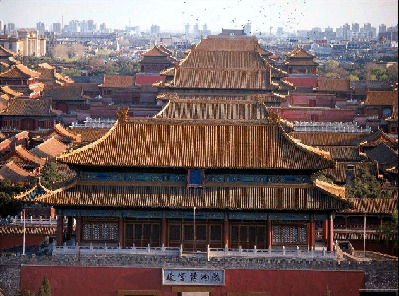
On July 7, 1937 shots fired around Marco Polo Bridge west of Beijing heralded the eruption of the Sino-Japanese War. Within a year, the Japanese had penetrated to most of eastern China. The treasures stored in Nanjing had to be moved again, this time by three routes to Sichuan, where they were secreted in three locations, Baxian, Emei and Leshan. Only at the end of the war were they consolidated in Chongqing, whence they were returned to Nanjing in 1947. By then the Nationalists were considerably weakened, and with the imminent takeover by the Communist armies of areas south of the Yangtze River, they began their retreat to Taiwan. Between the end of 1948 and the dawn of 1949, the Nationalists picked relics to fill 2,972 crates for shipping across the Strait. A rival Palace Museum was set up in Taipei to display these antiquities. Most of what were left was gradually returned to Beijing, although to this day 2,221 crates remain in safe-keeping in the store in Nanjing.
In the early 1950s, shortly after the establishment of the People's Republic, the Palace Museum looked resplendent once more after repair and redecoration. All the tall buildings were equipped with lightning conductors, and modern systems of fire protection and security.
As for the collection of antiquities, a systematic inventory was completed during the 1950s and 1960s, redressing the legacy of inaccurate cataloguing of former times. After more than a decade of painstaking effort, some 710,000 relics from the Qing palace were retrieved. At the same time, through national allocations, requisitions and private donations, more than 220,000 additional pieces of cultural significance were added.
-- Cultural Heritage
An Unparalleled Architectural Masterpiece
The Forbidden City is China's largest and most intact ancient building complex. It is laid out symmetrically along a north-south axial line. The well-designed palace appears magnificent, solemn and harmonious, representing the long cultural tradition of China and its outstanding architectural accomplishments five centuries ago. It is a truly superb masterpiece in every sense.
A Treasure House of Rare and Valuable Art Works
The Palace Museum in the Forbidden City has the country's largest collection of ancient art works, some of which are invaluable national treasures. Art works in the museum's collection total 1,052,653, including paintings, pottery, bronze wares, inscribed wares, toys, clocks and court documents.